Fire starters are convenient aids in Austria’s cold winters. Wood shavings lighted wood- and coal-burning stoves one generation ago. These shavings lighted spruce kindling, which in turn started burning bigger pieces of wood. Nowadays, it’s easier. Either commercially available or DIY fire starters directly light even thick pieces of hardwood.
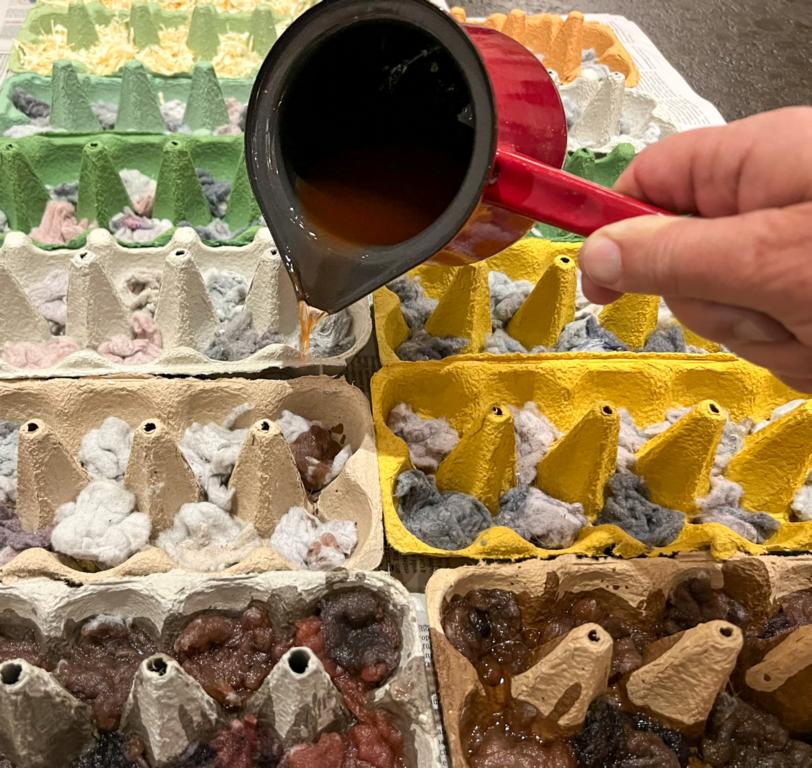
For many years, we have produced our fire starters ourselves. These are pieces of egg cartons filled with either lint, wood shavings, or cotton textiles and impregnated with candle wax or paraffin. One piece of such a fire starter will securely light big chunks of hardwood for our tiled stove without any kindling.
Materials used
Egg cartons as fire starter holders

Ordinary egg cartons made from thick paper board for ten eggs each are the best choice. We collect about 20 of them to produce 200 fire starters each year.
Paraffin, or other kinds of candle materials, as fuel
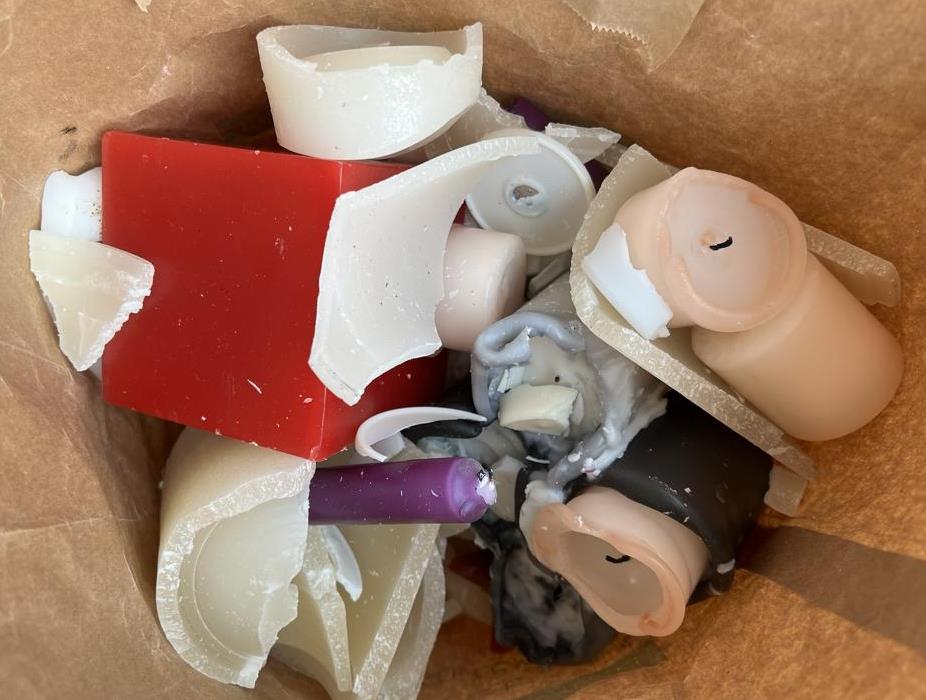
Candles can be made from various types of paraffin or wax. We use all kinds. Even the paraffin surrounding material of LED candles. Wicks, metal clips, and stickers on the candle bottoms can be left where they are. These materials will be left over in the heating pot after melting anyway.
Lint or substitute materials for wicks
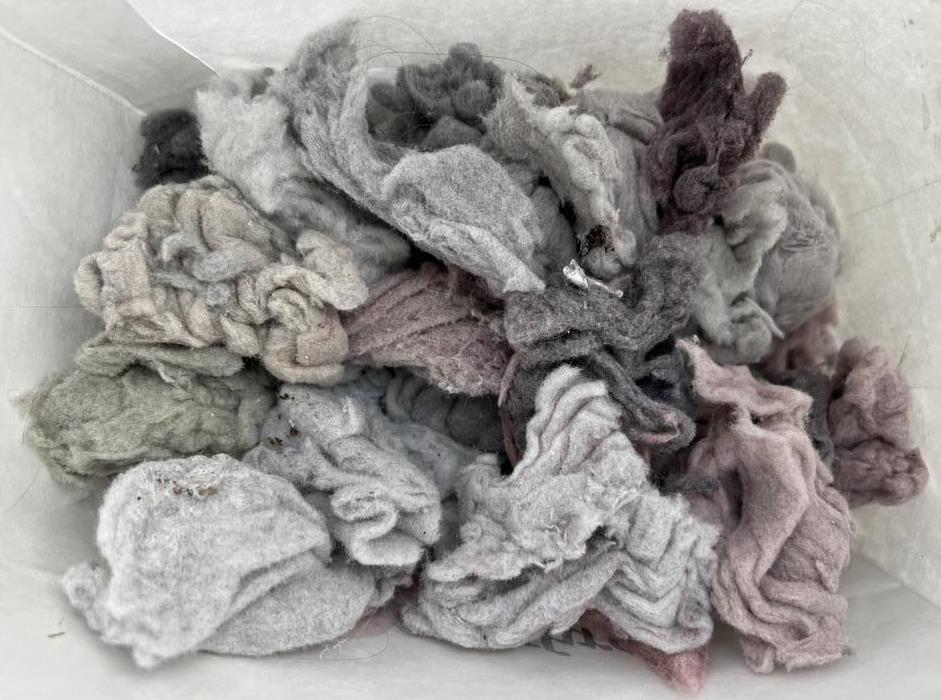
We collect lint from the sieve of a tumble dryer. For lint, the least amount of paraffin is needed to produce a good fire starter, which is clean to work with.

If using wood shaving instead of lint, a handful is needed for each 10-egg carton. Some shavings always find their way off the working area, which is a bit messy. Additionally, when covering the wood shavings in the egg depression, more paraffin is needed than lint. But fire starters with wood shavings, which serve as a wick, burn impressively long and hot.
We also tested about 1’’ x 1’’ (25 x 25 mm) patches of cotton textiles as wicks. About 3 – 4 patches were necessary for one egg cup. And I like them the least of these three materials, as they don’t fold uniformly and need lots of paraffin to cover them.
Another possibility is sawdust, which a fellow fire starter maker uses, which he describes here.
Producing the fire starters

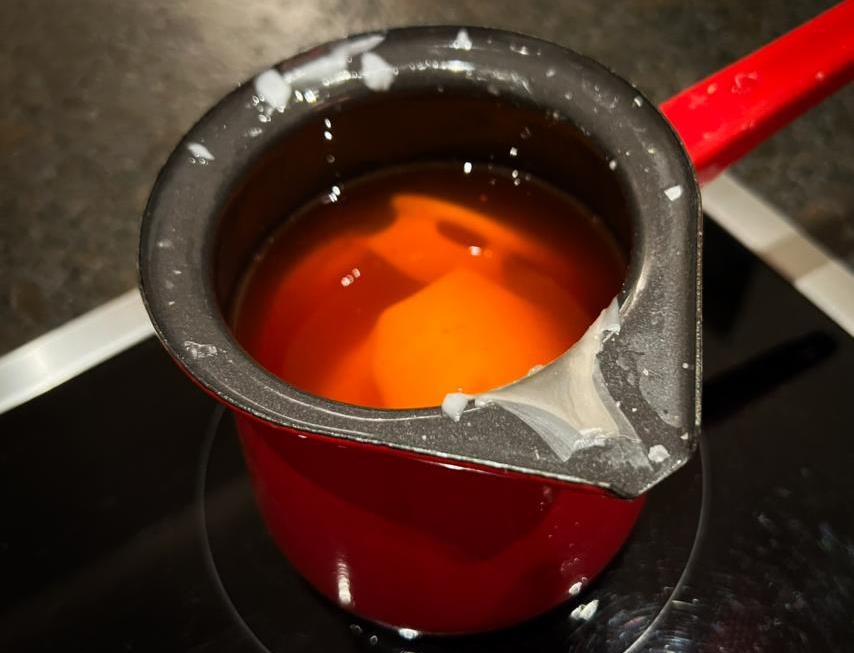
Producing these fire starters is easy.
- Place paper on the work surface so the wax does not penetrate the underlying surface.
- Fill the cartons with lint or wood shavings according to the attached pictures.
- Melt paraffin in a pot dedicated to this task and pour it onto the wick material until the fuel thoroughly penetrates it.
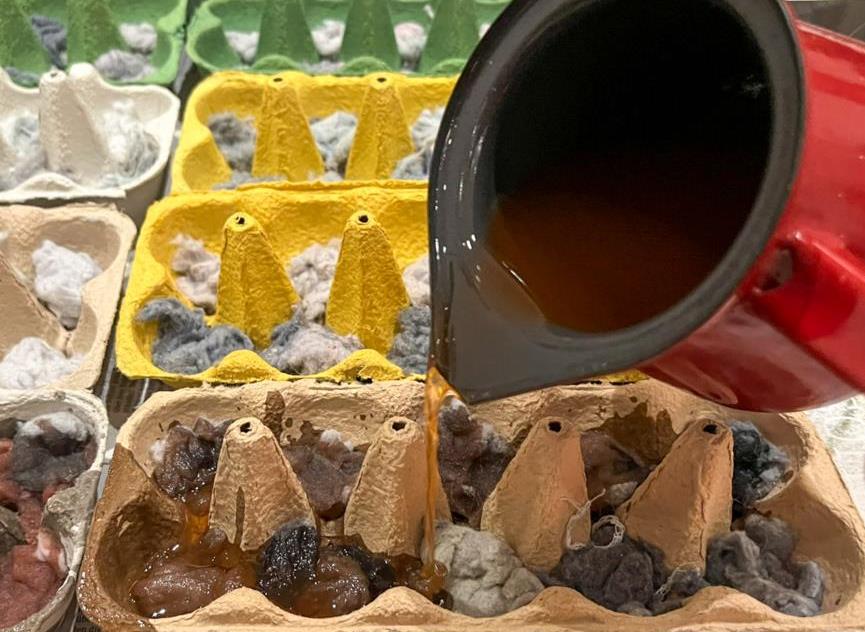
After pouring, cool the filled carton until the paraffin is fully hardened.
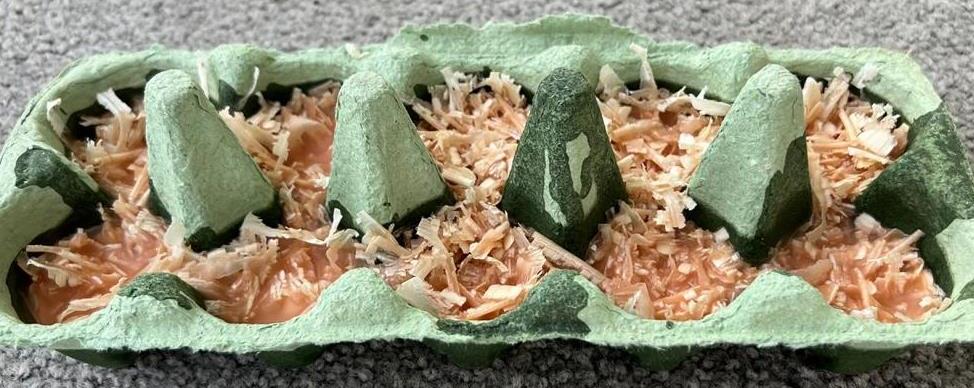

When fully hard, break the ten egg cups into single pieces. These are now the newly produced ten fire starters.
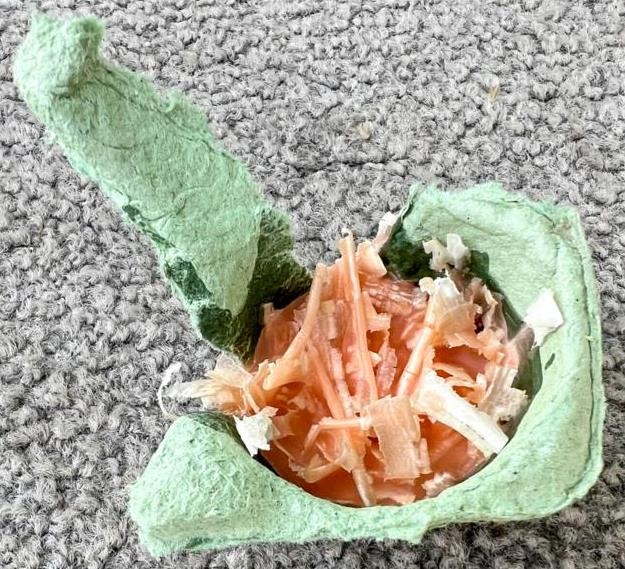

How to use them
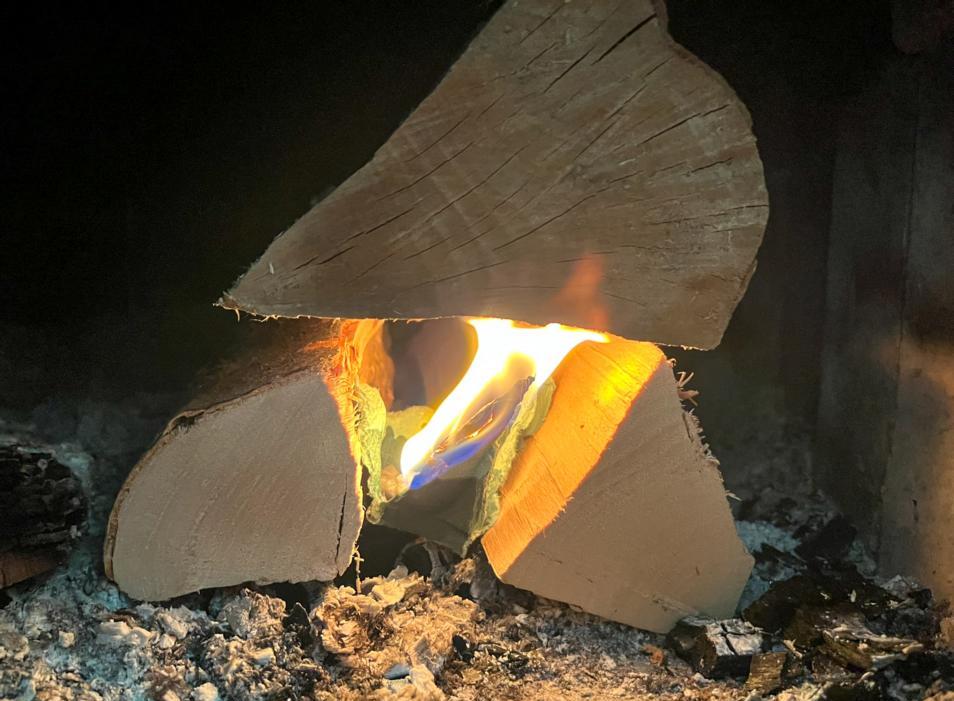
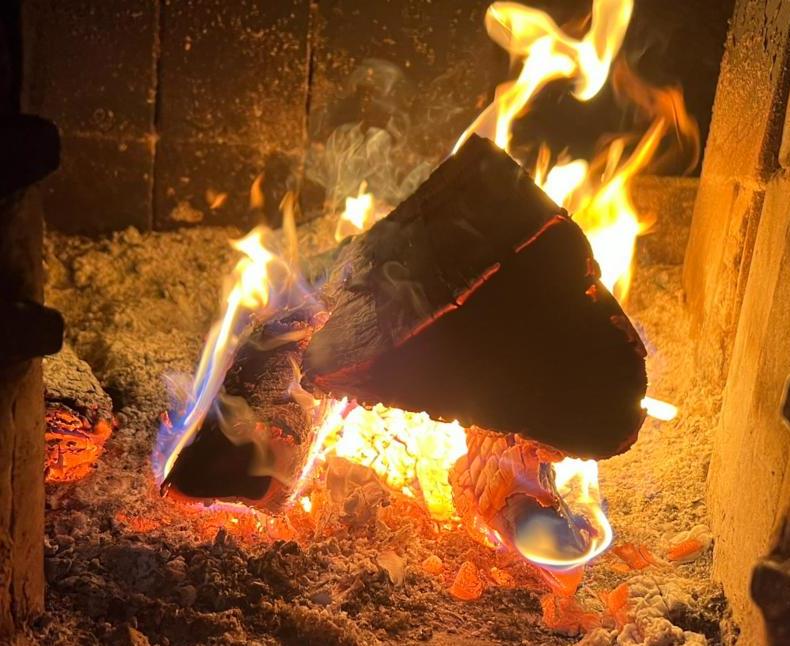
One such fire starter should be placed directly underneath big pieces of dry firewood. Additionally, enough oxygen flow to the flame has to be ensured. The flame of the fire starter will flow underneath the wood and turn up vertically wherever there is space. The firewood will start burning at such edges, where the flame turns horizontal to vertical. As I said initially, at our place, big chunks of dry beechwood are securely lit all the time with only one piece of such a fire starter.
Lessons learned from egg carton fire starters:
- Buying fire starters from stores is unnecessary, as the raw materials for such fire starters are readily available in most households.
- Necessary raw materials are egg cartons, candle pieces, and lint.
- Instead of candle pieces, paraffin or wax can be used.
- Wood shavings or cotton patches are also suitable replacements for lint.
- One such fire starter will securely light big chunks of dry hardwood.
.



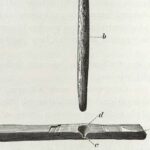

5 comments
Alex
Thank you for sharing this, it is exactly what I was looking for. I only have one little question: will there be residue in the oven from the wax/parafin? What I would like to avoid is that I need to clean the oven regularly from wax sticking on the bottom of my oven.
Kurt Hoelzl
Hi Alex, don’t worry. Just keep your melting pot clean on the outside. And your missis will stay happy.
Alex
Thank you for sharing this, it is exactly what I was looking for. I only have one little question: will there be residue in the oven from the wax/parafin? What I would like to avoid is that I need to clean the oven regularly from wax sticking on the bottom of my oven.
Kurt Hoelzl
Sorry for the misunderstanding. But again, don’t worry. The reason is the following:
The burning process of wood goes through three phases:
Phase 1: the drying phase
The water still present in the air-dry wood (approx. 15-20%) is evaporated. This happens at temperatures of around 100 °C. To do this, heat must be supplied to the wood during the heating phase; this is most effectively achieved using the described egg-carton fire starters.
Phase 2: the degassing phase
At temperatures between 100 °C and 150 °C, the ingredients contained in the wood are broken down slowly and converted into gases. At temperatures above 150 °C, gas evolution accelerates. The proportion of volatile components makes up around 80% of the wood substance. The actual combustion begins with the ignition of the resulting gases at approx. 225 °C (ignition temperature) and the release of heat. For this to happen, there must be enough oxygen. The peak of combustion is reached at around 300 °C. The reaction is now so stormy that the most heat is released. The flames can reach a temperature of up to 1100 °C.
Phase 3: the burnout phase
When all the volatile components have burned away, embers of charcoal are left behind. It burns slowly, almost without a flame, at a temperature of around 800 °C.
And the self-ignition point of wax is at around 280 °C.
The whole amount of wax or paraffin in the fire starters will therefore be burned off completely.
Hope this answers your question
Alex
Thank you for taking the time and writing such a detailed response.